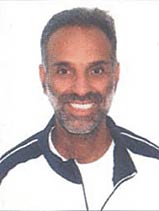|
TennisOne Lessons Having Fun Happy Bhalla One of the keys to the ideal mental performance state lies in understanding the simple concept of "having fun!" However, it is not so easy to have fun, especially for high performance players in competition. The ability to have fun stems from a certain outlook of life and this outlook may come somewhat naturally to some, but for others can only arise through the understanding that comes from a deep awareness of what is real and unreal. The biggest obstacle to having fun is the decease of being serious. Why do players become so serious? Seriousness is a sign that the ego has entered the scene. The motivation is no longer fun, but ego-gratification and recognition from others. Somehow we shift from being inner directed to being outer directed, from playing for our own inner pleasure to playing to gain the respect of others. Having fun need not mean being unfocused or not trying one’s best. There is a need to redefine the word, fun , so that players are not "forced" into becoming serious players. Why can’t we create a paradigm that allows players to play for fun and yet also work hard to be the very best that they can be? There is no conflict between the pursuit of excellence and having fun, and yet so many people are smitten with the serious disease and at such early stages in their development. There seems to be no alternative available to the player. Either one can have fun, which seems to imply giving less than one’s best or one can be serious, in which case one is spiraling into a direction that will make relaxed play virtually impossible. This serious disease, not only makes peak athletic performance very difficult, but much more importantly, it renders its victims absolutely self-tortured and miserable - not a pretty sight and one too many coaches and parents are paying too little attention to. I call it the obsession with improvement. Everybody is consumed by a need to get better. Ironically, often it is this need itself, that gets in the way of improvement happening. We know that learning takes place in the pursuit of fun. All around the world, the best soccer players learn their trade on the streets of their home towns kicking around an empty soda can or pairs of socks rolled up into a ball. It is only much later that their natural skills are honed with professional coaching. This is also when the serious disease kicks in and the fun disappears. Ronald hinho, widely
recognized
as the greatest soccer player in the world at this time seems to be an exception. He has a smile on his face at all times and truly seems to be child-like in his approach to the game; an enthusiastic and passionate outpouring of energy simply for the love of it. The same is true in America with basketball. Where did the greats really learn to play the game and how did they do it?
My understanding is that many players could develop this approach to the game if coaches and parents begin to change their mindset. Ultimately, players themselves must take responsibility for their perspectives on life and tennis, but certainly authority figures can make this easier or more difficult.
He can be reached at: happybhalla@hotmail.com or www.wholistictennis.com |

 Happy Bhalla has a Masters Degree in Philosophy and Religion and has been teaching tennis for over 30 years.He has written two books and many articles over the past 10 years on the role of the mind in both the learning process and in the competitive experience.
Happy Bhalla has a Masters Degree in Philosophy and Religion and has been teaching tennis for over 30 years.He has written two books and many articles over the past 10 years on the role of the mind in both the learning process and in the competitive experience.